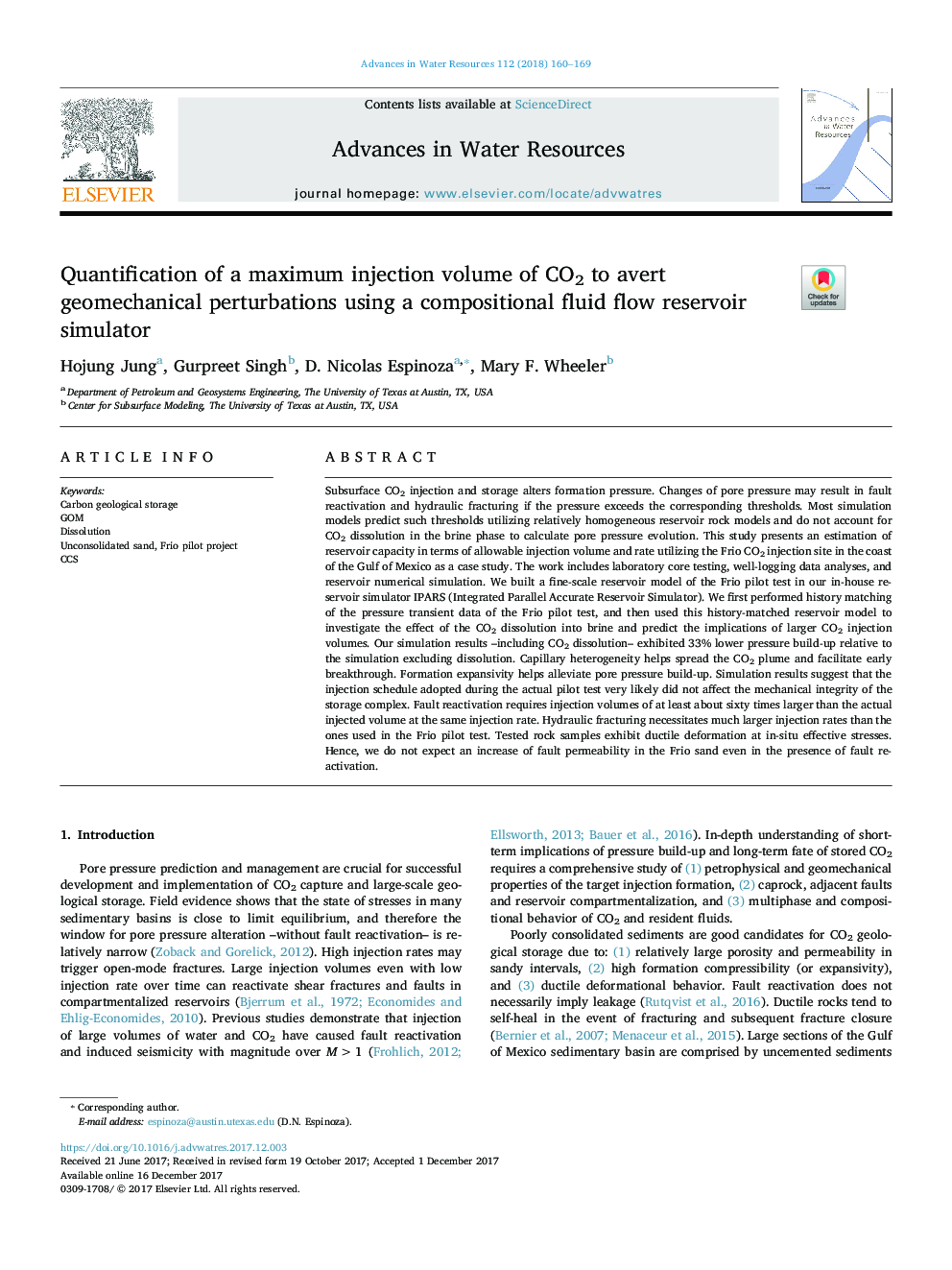| کد مقاله | کد نشریه | سال انتشار | مقاله انگلیسی | نسخه تمام متن |
|---|---|---|---|---|
| 8883380 | 1625599 | 2018 | 10 صفحه PDF | دانلود رایگان |
عنوان انگلیسی مقاله ISI
Quantification of a maximum injection volume of CO2 to avert geomechanical perturbations using a compositional fluid flow reservoir simulator
دانلود مقاله + سفارش ترجمه
دانلود مقاله ISI انگلیسی
رایگان برای ایرانیان
کلمات کلیدی
موضوعات مرتبط
مهندسی و علوم پایه
علوم زمین و سیارات
فرآیندهای سطح زمین
پیش نمایش صفحه اول مقاله

چکیده انگلیسی
Subsurface CO2 injection and storage alters formation pressure. Changes of pore pressure may result in fault reactivation and hydraulic fracturing if the pressure exceeds the corresponding thresholds. Most simulation models predict such thresholds utilizing relatively homogeneous reservoir rock models and do not account for CO2 dissolution in the brine phase to calculate pore pressure evolution. This study presents an estimation of reservoir capacity in terms of allowable injection volume and rate utilizing the Frio CO2 injection site in the coast of the Gulf of Mexico as a case study. The work includes laboratory core testing, well-logging data analyses, and reservoir numerical simulation. We built a fine-scale reservoir model of the Frio pilot test in our in-house reservoir simulator IPARS (Integrated Parallel Accurate Reservoir Simulator). We first performed history matching of the pressure transient data of the Frio pilot test, and then used this history-matched reservoir model to investigate the effect of the CO2 dissolution into brine and predict the implications of larger CO2 injection volumes. Our simulation results -including CO2 dissolution- exhibited 33% lower pressure build-up relative to the simulation excluding dissolution. Capillary heterogeneity helps spread the CO2 plume and facilitate early breakthrough. Formation expansivity helps alleviate pore pressure build-up. Simulation results suggest that the injection schedule adopted during the actual pilot test very likely did not affect the mechanical integrity of the storage complex. Fault reactivation requires injection volumes of at least about sixty times larger than the actual injected volume at the same injection rate. Hydraulic fracturing necessitates much larger injection rates than the ones used in the Frio pilot test. Tested rock samples exhibit ductile deformation at in-situ effective stresses. Hence, we do not expect an increase of fault permeability in the Frio sand even in the presence of fault reactivation.
ناشر
Database: Elsevier - ScienceDirect (ساینس دایرکت)
Journal: Advances in Water Resources - Volume 112, February 2018, Pages 160-169
Journal: Advances in Water Resources - Volume 112, February 2018, Pages 160-169
نویسندگان
Hojung Jung, Gurpreet Singh, D. Nicolas Espinoza, Mary F. Wheeler,